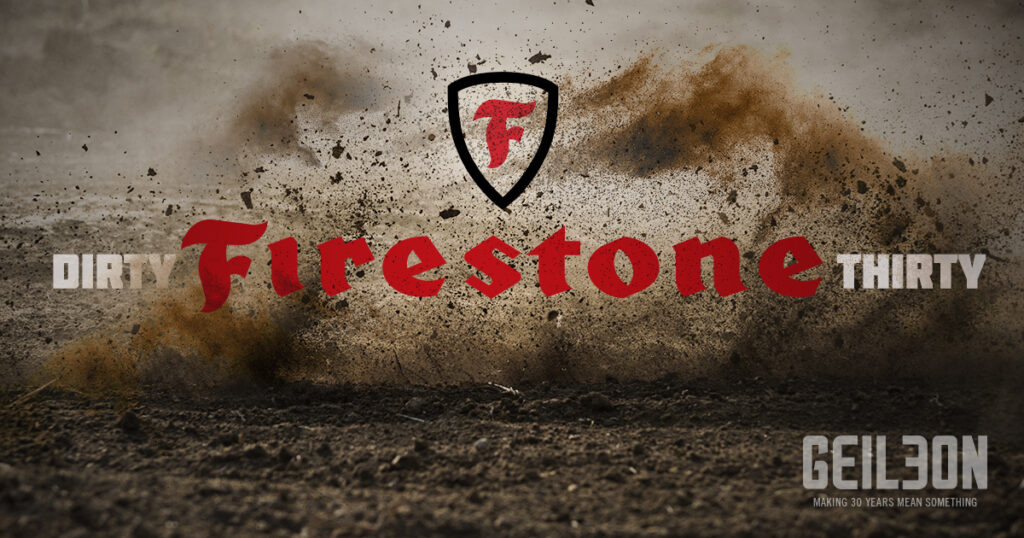In honor the 30th anniversary of when we first hung our shingle, we have been revisiting some fond memories over the past few months. However, since our founding in 1989, there have been plenty of stories of brands who have bottomed out. We explore some of our favorite stories from the past 30 years of brands dusting off the dirt and getting back on their feet in this series, the Dirty 30, a three-decade retrospective of redemption.
So far we’ve traveled to Valdez to witness the Exxon oil spill, discussed the troubled origins of Jack Box, and reviewed the family squabbles of Carl Hardee Sr and Carl Hardee Jr. This week, buckle up because we’re going on a ride with Firestone.

At the height of the SUV boom at the turn of the new millennium, Firestone and Ford found themselves at odds over a series of disastrous events. Ford’s flagship SUV, the Explorer, came equipped with Firestone tires off the lot. However, both brands made headlines as the top-heavy SUV found had a tendency to roll over when it would get a flat tire.
That’s when the blame game began. One side said that the Firestone tires had a tendency to separate at the tread. The other side said that Ford ignored important data and the Explorer’s design added danger to what should be a routine problem that many drivers have experienced: a tire blowing out.
Firestone even insinuated that the problem in part laid with the consumers performing insufficient maintenance by not checking tire pressure and maintaining proper inflation. That led Ford and consumers to push back, saying that it was unreasonable for them to perform such fastidious monitoring.
All this culminated in Firestone accepting some fault, but only to a limited extent. As reported by the New York Times during the height of the crisis, “Wall Street analysts…say the Firestone tack of trying to shift the responsibility onto Ford increases consumer skepticism about Ford management and the Explorer, but it will probably do little to restore confidence in its tire brand.”
Eventually, Firestone reached a $41.5 million dollar settlement that required them to cooperate with an investigation to discover what Ford knew about the problems. In 2001, Firestone launched a campaign called “Making it Right,” in which the CEO addressed consumers and their concerns in a television spot.
Another spot followed in which Mario and Michael Andretti, racecar drivers and spokesmen for the tire brand, expressed confidence in the brand (if they trust it on the track then it must be safe on the road!) and stressed the importance of proper tire maintenance. As a tie-in, Firestone dealerships gave away free tire gauges to customers.
Passive aggressive? Perhaps, but in the ensuing months after the recall the brand serviced 2,000 customers per month and original equipment sales begin to pick back up in the next quarter following the campaign.
Firestone refrained from advertising until 2004, when they launched a lifestyle advertising campaign with the soundtrack of their classic song, “Where the Rubber Meets the Road,” that harkens back to the 1970s…back when the FTC found that the company’s ads had falsely implied that its tires were “safe under all conditions of use.”
But like any quality rubber, Firestone keeps bouncing back. After a $510 million loss in 200 and a $1.7 billion loss in 2001, the tire company posted a $83 million profit in 2003. Despite some of the unsightly squabbling, the company made things right with their customers and set more rigid oversight and quality control standards, leading them to get back in the fast lane.
Each brand is unique and every brand is bound to run into some turbulence. How they handle it is what separates the greats from the also-rans. As we said last week, being proactive, responsive and forthright is easier said than done, but you can get a lot of miles out of it.
Stay tuned for the next installment of the Dirty 30, and check out our previous Dirty 30s:
Exxon Goes Tone Deaf in Valdez